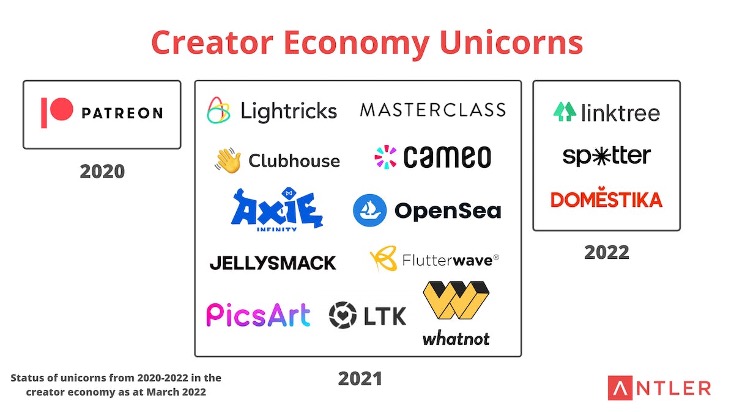Creator Economy, also known as the New Economy has been recognized as early as 1997, by Paul Saffo of Stanford University.
Early creators included animators, illustrators, and writers who managed to create income in a non-traditional way. Since then, the marketplace has been hugely diversified. Now the scope of content creation and monetization is immense enough to be accepted as a separate economic factor known as the Creator Economy.
Anybody with access to a phone or a computer and the internet can be a digital content creator. And the content can be anything from a 10-second Instagram reel to a two-hour Mukbang; in this case, the sky is literally the limit!

The Creator Economy – Dawn and Rise
Whether you call it the creator economy, the influencer economy, or the software facilitated economy, the basic principle is the same: generating revenue from the creation of content for like-minded people which includes short videos, blogs, & social media content on various platforms such as YouTube, TikTok, Facebook, Instagram, OnlyFans, Spotify, and many more!
The term, Creator was created by YouTube in 2011 to replace the term ‘YouTube Star’ which applied to the people who have large followers on the platform, since then it has become accepted and mainstream for online content creators.
Earlier, the creators used to publish content from online communities with similar interests for entertainment purposes, but now creators have become the face of different brands. More contemporary brands have jumped on the bandwagon and are now steering their marketing and PR campaigns towards social media platforms. The major star power are the creators known as Influencers.
Instagram, the leading social media platform in the world can be dubbed as the Modern Silk Route of Digital Marketing and Influencer Economy. Within a decade it has nearly 40 million users with more than 1000 followers. These numbers show how rapidly the new economy or the creator economy is growing. As the focus of the creator economy is marketing and advertising, it functions as one of the largest collectors, creators, and distributors of marketing content.
Social media content creators operate by creating a significant connection with their audience, who are not generalized, instead highly specified audiences interested in a certain topic. Once their attention is captured, they turn it into monetary gain.

Monetization
The factor that sets the creator economy apart from the regular economy is the way creators generate revenue directly from their audience without the need for advertisement or sponsorship. Platforms such as Facebook, TikTok, Snapchat, YouTube, and Tiki have set funds for paying successful creators which is a milestone for the rise of the creator economy.
There are various ways of monetizing content from using AdSense to selling specially curated merchandise of a specific niche or getting support from Patreon, the possibilities are endless. And partnering with brands of your niche is one of the most popular, and the most profitable ways of monetizing content.
Criticism of the Creator Economy
Although, the hype around the creator economy would have you believe that it is easy to generate rapid fame and money, the reality is far from it. It is estimated that only around 0.1 percent of the creators actually are able to earn a living from creating digital content.
There are many who suspect that the creator economy was overblown by the media, and the creators themselves to capture instant attention, but the reality is very humbling. Due to the exhaustive competition facing the creators, they are under the constant strain of making the next trend.

Future Prospects
Over the past few years, the creator economy has evolved and renovated itself to match the needs of the users. It is estimated that 2023 will be the year when there will be big shifts in the creator economy, as brands move from individual massively successful creators to creator communities and organized influencer marketing.
Earlier, it was nearly impossible for creators with fewer followers to generate revenue, as only creators with massive followers were able to earn a good amount, but now the scenario is changing quite rapidly.
As India is said to have the largest base of social media content creators, the future of both Indian content creators and the creator economy is going to witness something memorable in the upcoming years.
Written by – Sangeeta Behera
Edited by – Kushi Mayur




